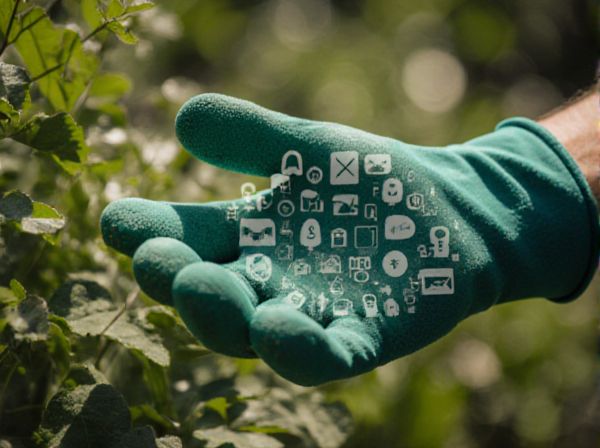
Frequency vs Volume Illustration
Watering frequency directly impacts plant health by ensuring roots receive consistent moisture without becoming waterlogged. Adjusting volume per session helps avoid stress from overwatering or underwatering, optimizing nutrient uptake and growth. Balancing these two factors is crucial for maintaining soil aeration and preventing root rot.
Table of Comparison
| Watering Frequency | Watering Volume |
|---|---|
| Daily | Low (Light watering) |
| Every 2-3 days | Moderate (Balanced amount) |
| Weekly | High (Deep watering) |
| Bi-weekly | Very High (Saturating soil) |
Understanding Watering Frequency and Volume
Understanding watering frequency and volume is essential for optimal plant health, as it influences soil moisture levels and root development. Frequent watering with low volumes can lead to shallow roots and increased evaporation, while infrequent watering with high volumes encourages deep root growth and better drought resistance. Balancing the two based on plant type, soil composition, and climate conditions ensures efficient water use and promotes sustainable growth.
Key Differences Between Frequency and Volume
Watering frequency refers to how often plants receive water, while volume indicates the amount of water applied each time. Key differences include that frequent watering with low volume maintains consistent soil moisture but may not promote deep root growth, whereas infrequent watering with high volume encourages deeper roots and drought resilience. Proper balance between frequency and volume is essential for optimizing plant health and water efficiency.
How Plant Type Influences Watering Needs
Succulent plants require infrequent watering with larger volumes per session due to their water-storing tissues, whereas tropical plants need consistent, moderate watering to maintain high humidity levels. Deep-rooted plants benefit from less frequent but thorough watering to encourage root expansion, while shallow-rooted species demand more frequent, lighter watering to prevent drying out. Understanding a plant's root system, growth stage, and natural habitat is essential for tailoring both the frequency and volume of water to optimize health and growth.
Soil Composition: Impact on Watering Frequency and Volume
Soil composition directly influences watering frequency and volume by determining water retention and drainage capacity. Sandy soils require more frequent watering with smaller volumes due to rapid drainage, while clay soils retain moisture longer, allowing for less frequent but deeper watering. Loamy soils balance water retention and drainage, optimizing both watering frequency and volume for healthier plant growth.
Seasonal Changes: Adjusting Frequency and Volume
Seasonal changes significantly influence watering strategies by requiring adjustments in both frequency and volume to match plant needs and environmental conditions. In warmer months, increasing watering frequency while moderating volume prevents soil dehydration and heat stress. Cooler seasons demand reduced watering frequency with higher volume per session to ensure deep soil hydration without promoting fungal growth.
Identifying Signs of Overwatering and Underwatering
Signs of overwatering include yellowing leaves, wilting despite moist soil, and mold growth, while underwatering typically causes dry, brittle leaves and soil pulling away from the pot edges. Monitoring soil moisture levels and leaf condition helps determine proper watering frequency and volume to avoid plant stress. Adjust watering practices based on these indicators to maintain optimal plant health and growth.
Best Practices for Watering Frequency
Optimal watering frequency depends on soil type, plant species, and weather conditions to maintain consistent moisture without overwatering. Deep, infrequent watering encourages root growth and drought resistance by allowing water to penetrate deeply into the soil. Monitoring soil moisture levels and adjusting watering schedules seasonally improves plant health and conserves water resources.
Maximizing Growth: Optimal Watering Volume
Maximizing plant growth requires balancing watering frequency with optimal volume to ensure deep root hydration without waterlogging. Applying a larger volume less frequently promotes robust root development by encouraging roots to grow deeper in search of moisture. Consistent soil moisture maintained through proper volume maximizes nutrient uptake and supports healthy, sustained plant growth.
Tools and Techniques for Accurate Watering
Soil moisture sensors and automated drip irrigation systems provide precise control over watering frequency and volume, ensuring optimal hydration without waste. Smart timers combined with weather-based controllers adjust watering schedules dynamically based on real-time environmental data. Calibrated watering cans and pressure-regulated hoses help maintain consistent water delivery for manual irrigation, enhancing accuracy and efficiency.
Common Watering Mistakes to Avoid
Watering too frequently with low volume can lead to shallow root growth and increased susceptibility to drought stress. Overwatering in large volumes may cause root rot and nutrient leaching, compromising plant health. Consistent watering schedules that balance frequency and volume are crucial to avoid common mistakes affecting soil moisture and plant vitality.
Frequency vs Volume Infographic

 gardendif.com
gardendif.com